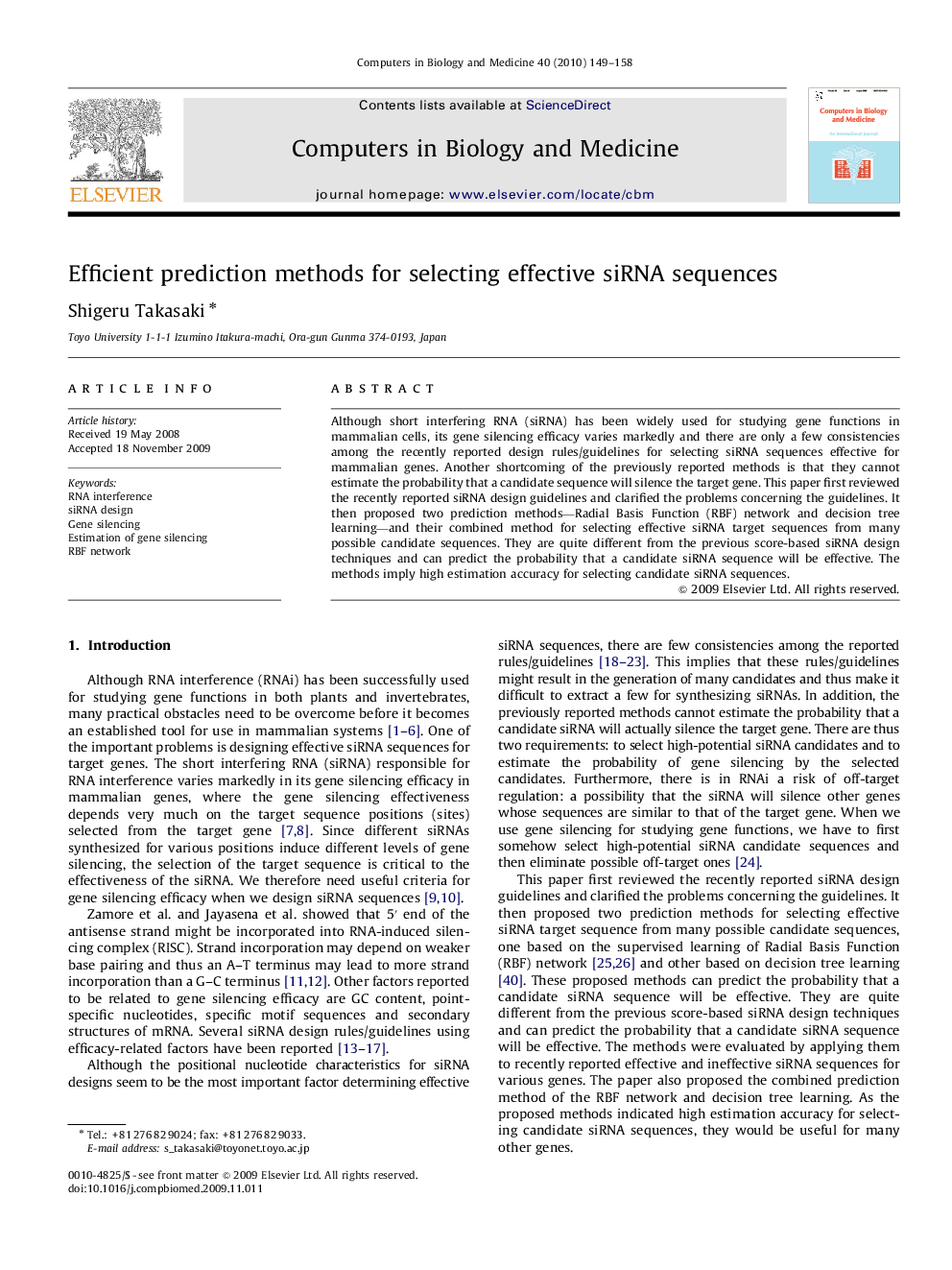| Article ID | Journal | Published Year | Pages | File Type |
|---|---|---|---|---|
| 505498 | Computers in Biology and Medicine | 2010 | 10 Pages |
Although short interfering RNA (siRNA) has been widely used for studying gene functions in mammalian cells, its gene silencing efficacy varies markedly and there are only a few consistencies among the recently reported design rules/guidelines for selecting siRNA sequences effective for mammalian genes. Another shortcoming of the previously reported methods is that they cannot estimate the probability that a candidate sequence will silence the target gene. This paper first reviewed the recently reported siRNA design guidelines and clarified the problems concerning the guidelines. It then proposed two prediction methods—Radial Basis Function (RBF) network and decision tree learning—and their combined method for selecting effective siRNA target sequences from many possible candidate sequences. They are quite different from the previous score-based siRNA design techniques and can predict the probability that a candidate siRNA sequence will be effective. The methods imply high estimation accuracy for selecting candidate siRNA sequences.
